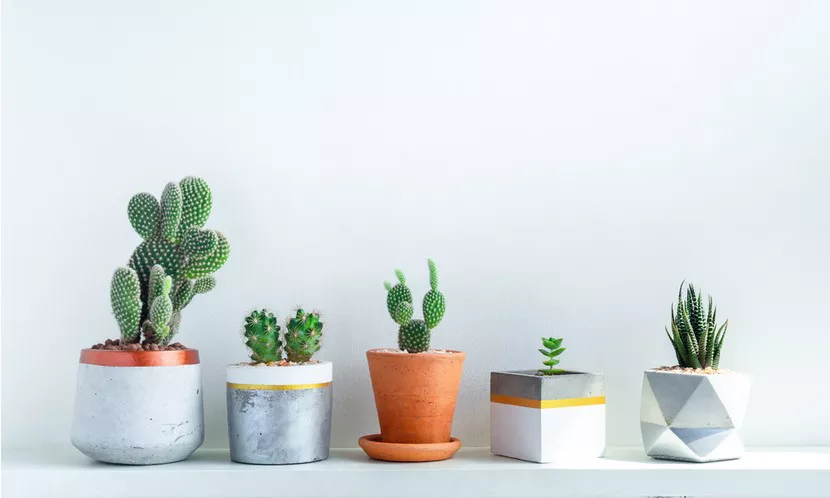Succulents are not only admired for their unique shapes and striking foliage but also for their occasional and stunning displays of flowers. While succulent blooms can be a delightful surprise, they may also raise questions about the appropriate care and attention needed during this period. In this article, we will explore what to do when your succulent flowers and provide valuable insights into the care required during the blooming phase.
1. Understanding Succulent Blooms
The Beauty of Succulent Flowers
Succulent blooms are a testament to the resilience and adaptability of these remarkable plants. Contrary to the misconception that succulents do not flower, many species produce vibrant and eye-catching blooms, adding an extra layer of allure to their already fascinating aesthetics.
Factors Affecting Flowering
Several factors influence succulent flowering, including the species of the plant, environmental conditions, and the age of the succulent. Some succulents are more prone to flowering than others, and certain species require specific conditions, such as exposure to cooler temperatures or shorter daylight hours, to trigger blooming.
2. Care During the Blooming Phase
Avoid Disturbing the Blooms
Once your succulent starts blooming, it is crucial to avoid disturbing the delicate flowers. Succulent blooms can be short-lived, and any disruption, such as handling or moving the plant, may cause the flowers to drop prematurely.
Provide Adequate Sunlight
During the blooming phase, ensure that your succulent receives ample sunlight, especially if it is a sun-loving variety. Adequate light helps the plant produce and sustain the energy needed to support blooming and maintain the health of the flowers.
Moderate Watering
While it is essential to water your succulent during the blooming phase, be cautious not to overwater. Succulents are susceptible to root rot, and soggy soil can be detrimental to both the plant and its flowers. Stick to your regular watering schedule, allowing the soil to dry out between waterings.
Fertilization
Applying a balanced and diluted fertilizer can support your succulent’s blooming phase. Choose a fertilizer with a low nitrogen content, as excessive nitrogen can promote vegetative growth at the expense of flower production. Fertilize your succulent sparingly and according to the package instructions.
3. Deadheading Spent Flowers
Why Deadheading Matters
Deadheading, the process of removing spent or fading flowers, is an essential practice to redirect the plant’s energy towards new growth and the production of more blooms. By deadheading, you encourage the succulent to channel its resources efficiently.
How to Deadhead Succulents
To deadhead your succulent, gently pinch or cut off the faded flowers close to the base of the stem. Take care not to damage the healthy leaves or the plant’s growing tip while performing this task.
Propagation from Cuttings
Deadheading also presents an opportunity for propagation. You can use the cuttings with the removed flowers to grow new succulents. Allow the cut ends of the stem to callus for a day or two before planting them in well-draining soil.
4. The End of the Blooming Phase
Fading Flowers
As the blooming phase comes to an end, you may notice the flowers starting to fade and wither. This is a natural process, and it is essential to continue providing your succulent with the care it needs to recover and prepare for its next blooming cycle.
Focus on Rejuvenation
After the blooming phase, the succulent might require some time to recover from the energy expended during the flowering process. Focus on rejuvenating the plant by providing optimal growing conditions, including proper light, water, and nutrition.
5. Preparing for Future Blooms
Healthy Growth for Future Blooms
To encourage your succulent to bloom again in the future, prioritize its overall health and growth. This includes providing adequate sunlight, well-draining soil, and appropriate watering to ensure the succulent maintains its vigor.
Consider Environmental Factors
If your succulent has a specific bloom-triggering requirement, such as exposure to cooler temperatures, consider replicating these conditions to encourage future blooms. Research the specific needs of your succulent species and adjust its environment accordingly.
6. Non-Flowering Succulents
Not All Succulents Bloom
It is essential to understand that not all succulent varieties produce noticeable flowers. Some succulents are primarily grown for their foliage, and their blooms may be small, inconspicuous, or infrequent.
Appreciating the Foliage
Non-flowering succulents can be just as visually stunning as their flowering counterparts. Embrace the beauty of their foliage and the unique textures and colors they bring to your garden or indoor space.
Conclusion
Succulent blooms are a delightful sight that adds an extra layer of beauty and intrigue to these captivating plants. Understanding the factors influencing succulent flowering and providing appropriate care during the blooming phase ensures a rewarding and visually appealing experience for succulent enthusiasts. By deadheading spent flowers, preparing the succulent for future blooms, and appreciating non-flowering varieties for their foliage, you can create a thriving succulent garden that continues to dazzle with its seasonal displays of color and charm.


